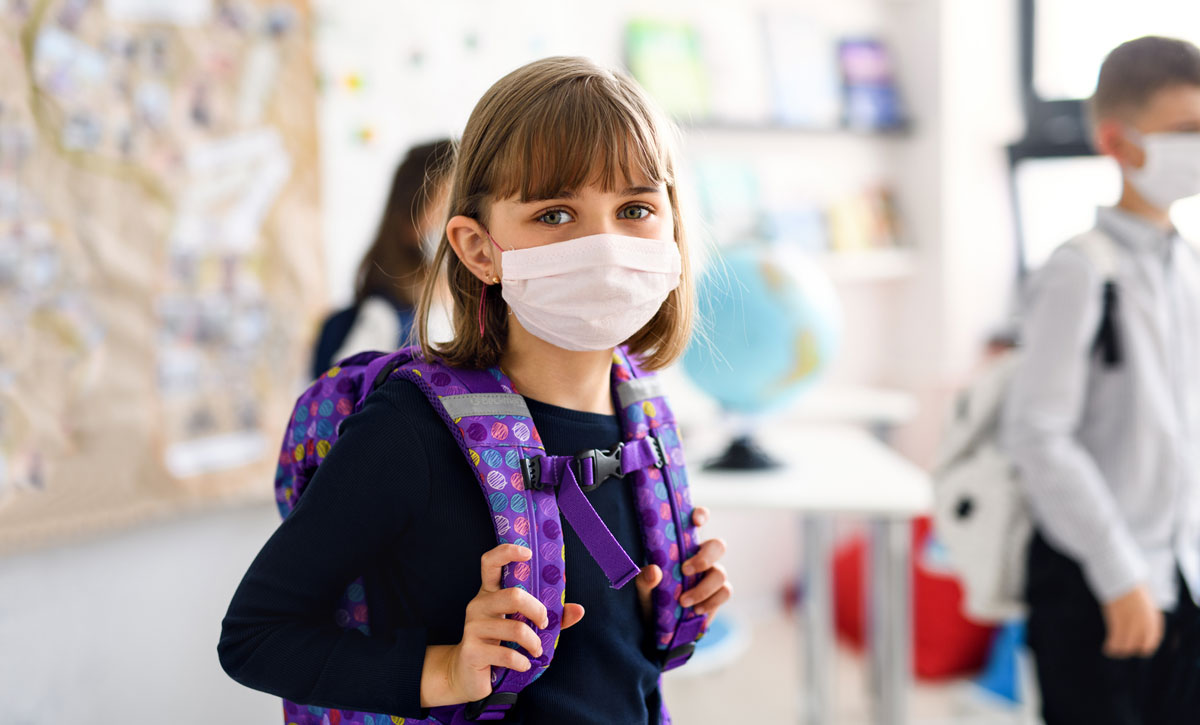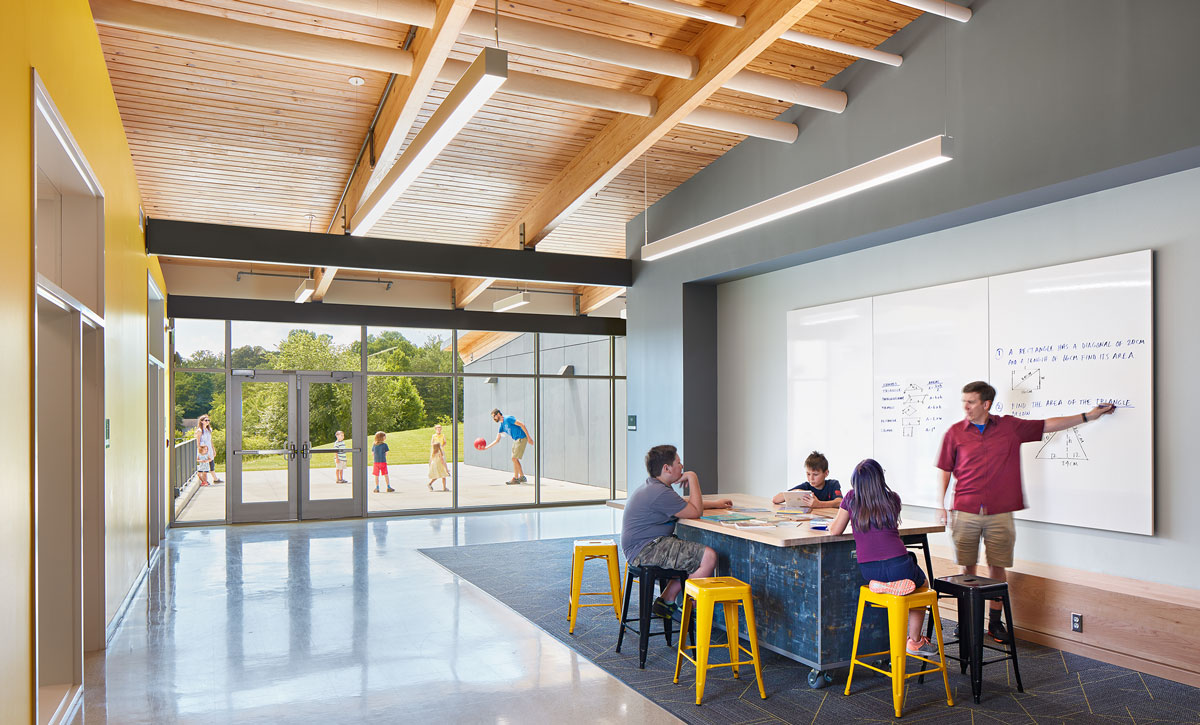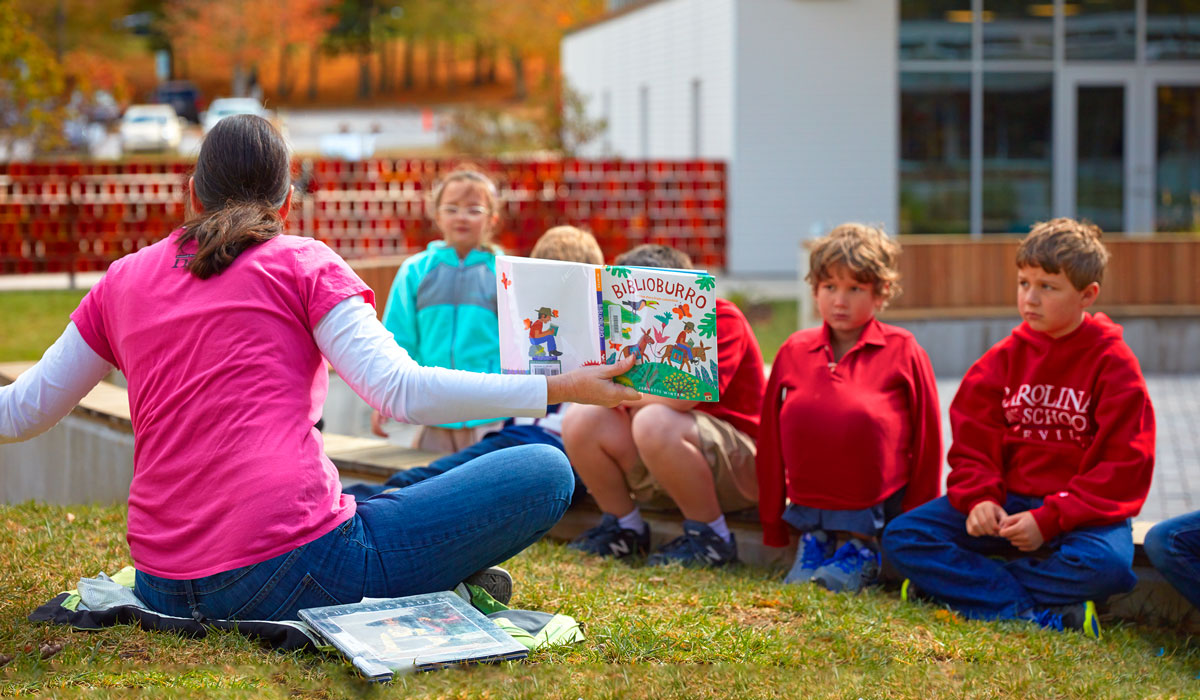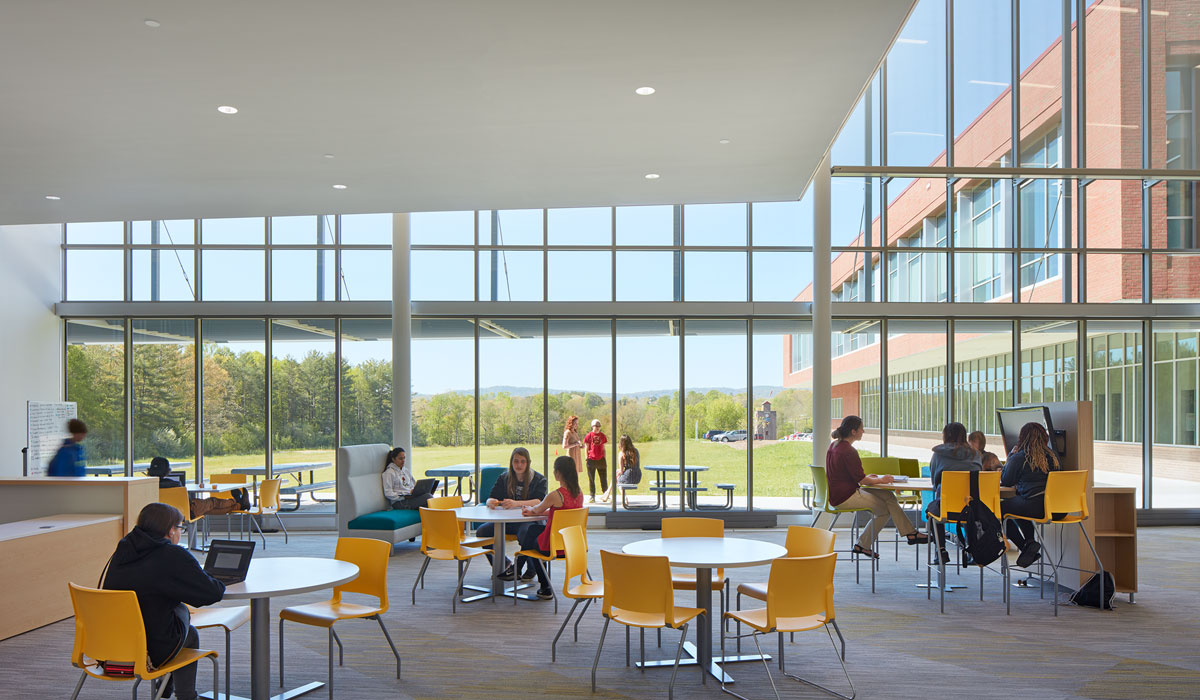How K-12 Schools Can Implement COVID-19 Guidelines Without Sacrificing the Learning Experience
 It is undisputable that spaces for collaboration, hands-on projects, and social interaction are among the most important elements for successful learning. But COVID-19 has shifted the focus from how best to teach to feasibility and safety issues surrounding teachers and students meeting in person at all. Our clients say that while they are exploring many options for safely reopening schools in the immediate future, they also anticipate the pandemic will have a lasting effect on space planning for new projects. The reality for this fall is that in addition to instruction, teachers will be focused on social distancing, helping students wear masks, circulating in a one-way pattern, and adjusting to numerous other changes such as long-term distance learning or hybrid models.
It is undisputable that spaces for collaboration, hands-on projects, and social interaction are among the most important elements for successful learning. But COVID-19 has shifted the focus from how best to teach to feasibility and safety issues surrounding teachers and students meeting in person at all. Our clients say that while they are exploring many options for safely reopening schools in the immediate future, they also anticipate the pandemic will have a lasting effect on space planning for new projects. The reality for this fall is that in addition to instruction, teachers will be focused on social distancing, helping students wear masks, circulating in a one-way pattern, and adjusting to numerous other changes such as long-term distance learning or hybrid models.
Regardless of the return to school model being implemented, flexibility is key in creating conditions for students and school communities to thrive.
To assess how our learning environments can meet COVID-19 guidelines and still support collaborative learning, our K-12 team evaluated guidelines from the CDC and others in the context of what we know about best practices for educational design. We offer the following strategies to promote the health, safety, and well-being of students and staff while aligning with 21st century pedagogy:
Spatial Planning and Flexibility
w
Guideline: Space seating/desks at least six feet apart when feasible.
Physical space within an existing classroom is largely unchangeable. Aside from changing venues, strategies to socially distance and/or reduce the number of students are necessary. Schools will need to manipulate spaces for a smaller cohort of learners or subdivide a larger class group in ways previously restricted by physical space or infrastructure. Classrooms must have enough space to support reconfiguration of furniture for varied group work and collaborative learning. Careful consideration of existing or new furniture layouts can help our clients determine the best plan for social distancing within existing spaces.
Guideline: Turn desks to face in the same direction (rather than facing each other), or have students sit on only one side of tables, spaced apart.
This recommendation is challenging – it contradicts much of our modern pedagogy, which is student-centered and emphasizes collaboration, critical thinking, and communication. It (albeit temporarily) takes teaching back in time to classrooms with desks in rows looking forward toward the teacher. To the extent possible with smaller class sizes, it is worth exploring other configurations that maintain social distancing but still allow students to see each other. ‘Working together’ will likely look quite different, but the visual connection is important.
When we think about the flexibility that already exists in our buildings, even spaces like corridors present an opportunity to meet COVID-19 guidelines. Wide corridors and sporadic break-out areas throughout the school create opportunity for student collaboration in normal times, but the width can also accommodate current distancing measures and controlled student circulation throughout the school.Learning happens everywhere in today’s school buildings. During this time, library and common areas will be even more valuable in providing individual, peer to peer, and technology-based interactions. These collaborative spaces provide the flexibility to house a variety of group sizes, which is valuable while safety restrictions remain in place and for the future.

A widened corridor at Edneyville Elementary School creates an additional break-out collaboration space.
Longer term, the design of technology and electrical infrastructure must be flexible and widespread to support rapidly changing needs. Flexible furniture and storage solutions will facilitate better use of shared spaces and encourage collaboration. We anticipate that the pandemic will only accelerate the growing demand for flexible spaces, infrastructure, and furniture. It will put new emphasis on the ability to adapt rapidly and effectively.
Harness the Power of Technology
w
We must not lose the ability to work collaboratively, even under these unusual circumstances. Technology and virtual communication tools have proven successful in allowing collaborative communication to continue in the absence of close physical contact. More emphasis on these tools and their accessibility is needed to support both learning and social well-being.
Particularly during distance learning, using technology so that students can see teachers and other students face-to-face is important. Regardless of whether classes are in person or remote, creating a sense of community in a class is critical for the safety, inclusion, and mental well-being of each student. Technology is present in most classrooms, so it is just a matter of shifting how and when (more frequently) we use those technologies. As digital natives, today’s students have a leg up in adapting to increased technology use.
Practical Ways to Promote Health & Cleanliness
w
Guideline: Wash your hands or use hand sanitizer
Thanks for this reminder, Mom and Dad! While this is not new information, it is important to keep at the forefront of our minds and ensure that there is time built into schedules for students to sanitize properly. Student circulation routes also play an important role in making hand washing or sanitizing a seamless and frequent activity. In assessing design alternatives, we must plan for appropriate traffic flow to enable these activities to take place.
Guideline: Discourage sharing of items that are difficult to clean or disinfect.
Incorporating materials that are easy to clean promotes a safer environment for students and staff and may even increase the longevity of building materials through more consistent, regular maintenance. Material selections in our schools are also closely tied to indoor air quality. Unhealthy materials that include volatile organic compounds (VOCs) or other harmful off-gassing contaminants adversely affect the quality of the air we breathe.
Intentionally specifying materials with longevity, such as terrazzo in corridors in lieu of VCT, integrates a durable, more easily cleaned surface in the school. Over time, VCT can begin to peel, creating opportunities for dirt and contaminants to collect in its cracks. Using a resilient material with recycled content can improve cleaning practices and prevent long term issues.
We anticipate that the pandemic will only accelerate the growing demand for flexible spaces, infrastructure, and furniture. It will put new emphasis on the ability to adapt rapidly and effectively.
Guideline: Ensure ventilation systems operate properly and increase circulation of outdoor air as much as possible.
As was always the case, properly functioning mechanical systems that provide enough outdoor air are critical. While technology exists for ultra-filtration and bacteria-killing equipment, few school systems have the capital to support a widespread upgrade of this magnitude. However, introducing more outside air could be as simple as providing operable windows. Better yet, take the classroom outdoors.

Taken pre-pandemic at Carolina Day School, the facility’s outdoor courtyard serves multiple purposes as a classroom, gathering space, and play area.
Outdoor learning is getting more attention thanks to clear data that being outside reduces virus transmission. It also provides an engaging opportunity for active, experiential learning. In design, we must think of these spaces as part of the educational program and integral to the function of the school. During COVID-19, both planned and impromptu outdoor ‘classrooms’ offer schools the ability to improve the student experience, increase comprehension, and support mental health.
The Value of Outdoor Environments to K-12 Learning, Health, and Student Safety authored by architect Becky Brady, details the benefits of these experiences.
Mental Health and Biophilia
w
In addition to all that is required for socially distanced, in-person learning, mental health must be a priority in our conversations. Researchers have identified rising rates of mental health problems amid the pandemic and are warning of an oncoming mental health crisis. Too often we are seeing mental health concerns in younger and younger students, which can lead to the increased possibility of additional problems over time. Supporting students’ and teachers’ mental health in a school building should be a top priority of all schools, all the time. During a pandemic several primary methods of supporting good mental health are limited (socialization and in-person sessions with school counselors among them). Part of facilitating learning is promoting mental health, and during this time, we must think outside the box.
Research indicates that sensory contact with nature can improve overall well-being and mental health. Opportunities to move a classroom or take a break outdoors helps to break down the barriers of stress and leads to increased communication between students and teachers.
Even within our school buildings, opportunities to offer natural experiences exist. Providing natural daylight and good quality artificial lighting leads to less stress and higher test scores. Increased transparency serves a dual function of improving access to natural light as well as increased visual connectivity on the interior, promoting safe environments and appropriate supervision. Careful incorporation of shared teaching and planning spaces can go a long way to decrease isolation and improve teacher well-being and the work environment.

Innovative High School puts its natural surroundings on display, reinforcing students’ connection with the outdoors and its mental health benefits (image taken pre-pandemic).
This multi-faceted global health crisis has reinforced the fact that schools are incredibly valuable to our society, providing not just a basic education but impacting the way entire communities function and how the American economy thrives. While this experience has highlighted the adaptability and resiliency of our nation’s students and teachers, it has also shown us where we can do better. As designers, we must continue to research and design environments that support social and emotional needs, physical health, and current trends in K-12 education.
Becky Brady, AIA, ALEP, CDT, LEED AP BD+C, is an architect at Clark Nexsen with more than 15 years of design experience. Specializing in K-12 and educational design, she is passionate about school safety and is a member of a national taskforce created by the Association for Learning Environments (A4LE) to study, vet, and consolidate school safety concepts.
Aaron Brumo, AIA, LEED AP BD+C is an architect at Clark Nexsen with nearly 20 years of experience in a wide variety of project types including K-12, higher education, and commercial. His recent projects include the Carolina Day Lower School, Edneyville Elementary School, and Innovative High School.
Julie Leary, AIA, LEED AP BD+C was a senior architect at Clark Nexsen with more than 10 years of experience largely focused on design for K-12 and higher education. She was recognized for her conscientious attention to detail at all scales, and her projects include Apex High School, South Lakes Elementary School, Edneyville Elementary, and Conn Elementary School. Julie left in 2023.